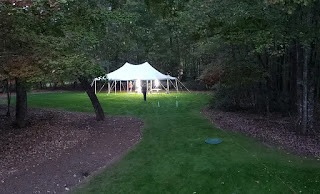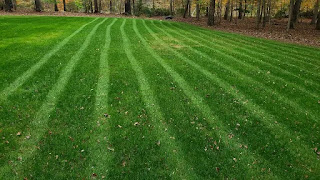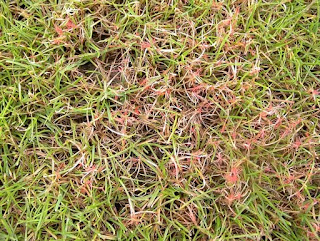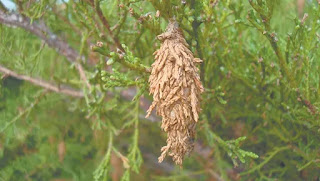The Challenge
In September of 2020, I was approached by a customer to grow a nice, lush green lawn for his daughter's wedding. Normally, this would be a challenge in itself taking a year or two. What took this challenge over the top was that I had 4 weeks to do it. CHALLENGE ACCEPTED!
How We Approached the Challenge
Normally, I would start a project like this by treating the soil, ridding the area of weeds, then renewing the turf with seeding and a variety of ways to break up the soil. I regret not having any before pictures, but, rest assured, it was the worst of the worst. A hard pan drainfield composed of clay and silt. This area not only lacked a single blade of grass, it was peppered with all types of weeds. What did I get myself into?
Execution of the Task at Hand
We started by applying the maximum rate of lime. (soil ph was about 5.7) We then put down a liberal amount of organic, bio solid starter fertilizer. I did this first so the machines would grind it into the ground. We then powerseeded the entire area with a Billygoat Slit Seeder in two directions putting down the seed at 10 lbs per 1000 sq ft. As for the seed, we used an 80/20 blend of Turf quality Tall Fescue and Perennial Rye. We then core aerated the entire area with a Classen SA-25 twice. After this, we put down about 1/4 of an inch of leaf compost that was fine and black. This would ensure a high germination rate. The final touch was a light overseeding.
The Results
Well as you can see, the pictures do not lie. The customer was so happy, he sent me pictures. This is the reason I got into this business 30 years ago. Making something out of nothing never gets old.














